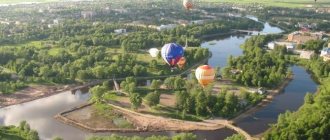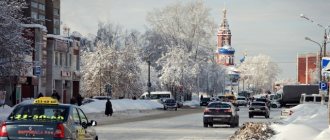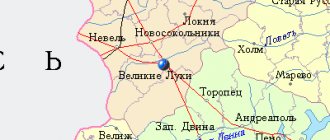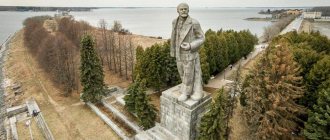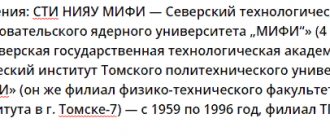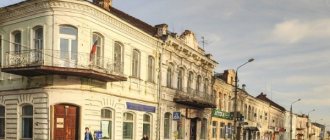| city of regional subordination with administrative territory[1] / urban district[2] | |
| Lyubertsy city Lyubertsy urban district | |
| Flag | Coat of arms |
- (4,1 %)
This article is about the municipality. About the city, see Lyubertsy.
Lyubertsy urban district
- a municipal entity on the territory of the Moscow region of the Russian Federation.
The administrative center is the city of Lyubertsy.
At the level of administrative-territorial structure - the city of regional subordination of Lyubertsy with its administrative territory.
Story
On January 9, 2022, by law No. 206/2016-OZ, the municipal formation Lyubertsy municipal district was transformed into the municipal formation urban district Lyubertsy with the abolition of all 5 urban settlements that were previously included in it[5].
On March 29, 2022, the holiday village of Kraskovo, the workers’ villages of Malakhovka, Oktyabrsky and Tomilino were placed under the administrative subordination of Lyubertsy[6].
On April 23, 2022, the administrative-territorial unit Lyubertsy district was transformed into a city of regional subordination with an administrative territory[7][8].
See also: Lyubertsy district
Coat of arms
The coat of arms of Lyubertsy is presented in the form of a French shield. It depicts a narrow concave red point in an azure field. It is inclined to the right of the viewer and at the bottom it expands to the edges of the shield. It has a thin border tapering upward. The top of the point is covered with a gold star with five rays. They lengthen from bottom to top. The coat of arms symbolizes the space industry, helicopter manufacturing, science, and education.
The artistic composition is included in the State Heraldic Register of the Russian Federation under No. 3474. Approved by the decision of the Council of Deputies of the Lyubertsy urban settlement No. 119/4 dated June 29, 2007.
Settlements
The urban district includes 22 settlements, including: 1 city, 3 workers’ settlements, 1 dacha settlement, 6 towns and 11 villages:
| № | Locality | Type | Population (persons) |
| 1 | Ballast Quarry | village | ↘26[12] |
| 2 | Egorovo | village | ↗438[12] |
| 3 | Zhilino-1 | village | ↗364[12] |
| 4 | Zhilino-2 | village | ↗299[12] |
| 5 | Kirillovka | village | ↗399[12] |
| 6 | Kraskovo | suburban village | ↘23 910[11] |
| 7 | Lukyanovka | village | ↗21[12] |
| 8 | Lyubertsy | city | ↗208 397[4] |
| 9 | Malakhovka | workers' village | ↘24 781[11] |
| 10 | Marusino | village | ↘490[12] |
| 11 | Mashkovo | village | ↘84[12] |
| 12 | Peaceful | village | ↘99[12] |
| 13 | Motyakovo | village | ↘134[12] |
| 14 | October | workers' village | ↗20 073[11] |
| 15 | Pekhorka | village | ↗313[13] |
| 16 | Sosnovka | village | ↘0[12] |
| 17 | Tokarevo | village | ↘381[12] |
| 18 | Tomilino | workers' village | ↘29 839[11] |
| 19 | Torbeevo | village | ↘27[12] |
| 20 | Khlystovo | village | ↘3[12] |
| 21 | Chapel | village | ↘197[12] |
| 22 | Chkalovo | village | ↘278[12] |
See also: List of settlements in the Lyubertsy urban district
DRANCY – FRENCH SIBLIN CITY Lyubertsy
Pbratymov Street - many of our readers have probably heard about it or been to this microdistrict of high-rise buildings in the north of Lyubertsy. However, not every Lyubertsy resident knows why this street got its “name”.
And this story began half a century ago: it was then that the foundation was laid for further contacts, exchange of delegations and cooperation between the sister cities of Lyubertsy (USSR) and Drancy (France).
RESIDENTS OF COVENTRY TO THE DEFENSERS OF STALINGRAD
Officially, 1944 is considered the starting point for the movement of twin cities (twin cities). But this idea originated even earlier: in the British city of Coventry, after the terrible night of November 14, 1940, when 12 hours of German bombing killed 554 people and destroyed three-quarters of the houses in the city center. Two years later, the city of Stalingrad was subjected to gigantic destruction by the Nazis.
It was then that a left-wing movement arose in Coventry, calling on Britain to step up assistance to the Soviet Union. And the city itself did a lot to send help to the “Russians at the front,” and this became a touching event. 830 Coventry women paid six pence each for the right to embroider their signature on the tablecloth. And in total the population of Coventry then collected a considerable sum of 4,516 pounds for the purchase of X-ray machines for the Red Army; Children also took part in collecting money. The tablecloth from Coventry, along with the message “A little help is better than a lot of sympathy” and with the donations collected, was transferred through the USSR Embassy in London to Stalingrad. In response, hundreds of surviving women of Stalingrad sent an album with their signatures to Coventry. In 1944, the bonds of friendship between these two cities were formalized; and the Coventry tablecloth is still kept in the Museum of the Battle of Stalingrad in Volgograd as a priceless relic.
In 1957, representatives of sister cities created the World Federation of Twin Cities (WFTG), which in 1963 declared the last Sunday in April as World Sister Cities Day. In 1964, the twin cities of the USSR united into the Association for Relations between Soviet and Foreign Cities, which became part of the All-Union Federal Penitentiary Group. Later, sister cities Lyubertsy and Drancy were also included in this Association.
A CITY ON THE OUTBAR OF PARIS
It’s gratifying to know, isn’t it, that just 11 kilometers from the center of Paris there is the city of Drancy, which for us, Lyubertsy, has been for half a century not completely “foreign,” but officially related to our Lyubertsy. 66.5 thousand residents of Drancy get up every morning with the hope of a successful day, make plans, rush to work, study or on dates with loved ones, and each of them, like us, probably dreams of happiness and peace.
The city of Drancy is located in the Ile-de-France region (translated from French as the Island of France), in the central part of the Paris Basin, between the Seine, Marne and Oise rivers. The territory of Ile-de-France (with its center in Paris) is often called the core of the French state. The Ile-de-France region includes 8 departments, one of which, Seine-Saint-Denis, includes the city of Drancy. Small in area, the department of Seine-Saint-Denis ranks second in France in terms of population density.
The history of Drancy has been known since the Gallo-Roman era (3rd century AD). In the Middle Ages, this region subsisted on agriculture: cereals and grapes were grown on the plains, and cattle were grazed in the meadows. In the 16th-17th centuries, Drancy belonged to the Seguier family, who built a castle on this land. In the 19th century, Baron de Ladoucette built a large park in Drancy. For hundreds of years, the family of barons de Ladoucette kept the winery for their pleasure and prestige. Now a citizen of France and a descendant of the famous family, Baron Patrick de Ladoucette, is widely known not only in his Fatherland, but throughout the world. The first of the generations of his aristocratic family, Patrick de Ladoucette chose winemaking as his main occupation. In 1975, he released his wine “Baron de L”, which provided him with recognition for many years. Today, Baron de Ladoucette is one of the most successful creators of expensive wines in the world: he owns 8 brands of wines and champagne. Most of his wines are made from Sauvignon Blanc grapes grown in the Loire River valley, where the baron’s luxurious castle is located...
The annual summer Lendy fair, held on the plain between the city of Saint-Denis and Paris, to which sellers and buyers flocked from all over Europe, also had a positive effect on the development of Drancy. With the creation of railways, active economic growth began in the region, which contributed to its demographic development. During the war between France and Prussia, in 1870, Drancy was almost completely destroyed. In the next century, amid a housing crisis exacerbated by the military destruction of the First World War, the state was forced to subsidize low-cost housing construction. One progressive example of this was the La Muette residential complex in Drancy, built in 1930-1934. designed by the architects Eugene Baudouin and Marcel Lauds. It was densely built up with 15-story single-section “tower” buildings in a row, each of which was adjacent to two 3-4-story sectional buildings. In construction, flow-based organization of work was used for the first time; a metal and reinforced concrete frame was used with filling from lightweight prefabricated concrete slabs.
CAMP WINDOWS TO ETERNITY
In 1940, the La Muette complex was confiscated by the German occupiers: used as police barracks, then as the primary detention center in the Paris region for the isolation of Jews, Gypsies and anyone planned to be deported from France. This transit concentration camp in Drancy and a transit point for sending people to death camps became one of the most shameful and terrible pages in the list of Nazi atrocities. 70 thousand Jews passed through the Drancy camp during the Second World War, 61 thousand of them were deported to the Auschwitz and Sobibor concentration camps. The famous French poet and artist Max Jacob also died in the Drancy concentration camp; Many representatives of the Russian emigration in France passed through him and later died in Nazi concentration camps. The prisoners of the Drancy concentration camp were actively helped by Mother Maria, the nun Maria, and in the world by an emigrant from Russia Elizaveta Skobtseva, after her first husband Kuzmina-Karavaeva, the heroine of the Resistance movement, who died in the Ravensbrück concentration camp in March 1945 - a week before the liberation of its prisoners by the Red Army . On August 17, 1944, Allied troops entered the Drancy camp, where they found only 2 thousand people alive.
After the war, the La Muette complex again became a residential area, where in 1976 a monument to the victims of Nazism was erected, and in 1988 a commemorative railway carriage was installed - one of those in which French deportees were taken to Auschwitz. On September 21, 2012, in Drancy, the opening ceremony of the Holocaust memorial was held by French President Francois Hollande, at which the head of state called the transit camp in Drancy during the war years “the threshold of hell.” President Hollande stressed the need to pass on the memory of the terrible crimes of Nazism to future generations, calling learning from the past “a way to prevent it from happening again.”
MAURICE NIELE – HERO OF THE RESISTANCE AND MAYOR OF DRANCY
The fact that Lyubertsy and Drancy became sister cities was greatly facilitated, of course, by the heroic past and civic position of Maurice Niel, the mayor of the city of Drancy since 1959, who was elected to this post 7 times (!) from then to 1997; his positive attitude towards our country, which did so much for the Victory over fascism.
The future statesman and politician, member of the French Communist Party, Maurice Niel was born in Paris on August 12, 1919 in a working-class family. In his youth, he also worked as a milling machine operator at one of the Parisian enterprises. In 1939 he was mobilized into the French army, and at the beginning of the war with Germany he was captured and escaped from a prisoner of war camp. Maurice Niel joined the Occupation Resistance movement from the very beginning. Perhaps even then he turned his attention to the Russians, who fought against fascism shoulder to shoulder with the French: 3 thousand Soviet citizens who ended up in France, and many emigrants from Russia who lived there, also took part in the Resistance movement. In 1941, Maurice Niel was again captured by the Nazis, again fled and joined the partisan detachment - the “Maquis”. Thanks to his personal courage, he soon became the commander of a partisan detachment, at the head of which he participated in the liberation of the city of Bordeaux from the invaders.
After the end of the war, Maurice Niel returned to Paris. In 1986, he became a deputy of the French National Assembly from the department of Seine-Saint-Denis on the lists of the French Communist Party. An officer of the Legion of Honor and the Order of Merit, Maurice Niel was also awarded the Military Cross, the Resistance Medal (France), the Cross of the Resistance Volunteers and the Veteran's Cross Medal. He passed away on December 5, 2001 in the city of Bobigny in the Seine-Saint-Denis department near Paris. But the memory of this most worthy man is alive not only in France, but also on the land of Lyubertsy.
From December 2001 to this day, the head of the city of Drancy is Jean-Christophe Lagarde (born in 1967), a member of the National Assembly of the French Republic.
Our story about the stay of delegations from the French city of Drancy on Lyubertsy land is in one of the upcoming issues of the newspaper.
Tatiana SAVINA
Reproduction of this text or fragments from it in printed publications and in electronic form is only with the written consent of the author.
The editors of the "Lyubertsy newspaper" will be grateful to eyewitnesses of the events of the 1960s - 1970s who provided photographs for copying and provided additional information on the topic "Drancy and Lyubertsy - sister cities." Contact phone number: 8-915-101-67-07
Economy
Industry
Enterprises:
- JSC "Kamov", Lyubertsy
- JSC Moscow Helicopter Plant named after. Mile", Tomilino
- JSC NPP Zvezda, Tomilino
- CJSC “Weighing company “Tenzo-M””, Kraskovo
- ABC-MK LLC, Kraskovo
- OJSC "Lyuberetskiy Bridge Construction Equipment Plant"
- OJSC "Moscow Production Association for the Production of Diamond Tools", Tomilino
- CJSC "Power Equipment Plant"
- JSC "Lyubertsy Plant Montazhavtomatika", Lyubertsy
- JSC "Lyubertsy Electromechanical Plant", Lyubertsy
- LLC “Research and Production Enterprise “Tomilinsky Electronic Plant””, Tomilino
- OJSC Scientific and Production Enterprise ElTom, Tomilino
- LLC "Professional kitchen equipment "ATESI""
- OJSC "DOK - 13"
- JSC "Hobbit"
- LLC "KOA - Gas"
- LLC "Confectionery factory "Volshebnitsa""
- JSC, Lyubertsy
- JSC "Kaffa Industries", Tomilino
- OJSC "Lyubertsy Bread Factory", Lyubertsy
- Lyubertsy city consumer society "PRODRESOURS", Lyubertsy
- FES LLC,
- LLC "Alfa-T", Lyubertsy
- OJSC "Lyubertsy Dairy Plant", Lyubertsy
- CJSC "Product-Service Company"
- CJSC "Hydrosila" Production of hydraulic cylinders, Lyubertsy
- JSC "Forema-Kuhni", Oktyabrsky
- Pekhorsky Textile LLC, Tomilino
Agriculture
The agro-industrial complex is represented by:
- 2 agricultural enterprises producing agricultural products,
- 1 fruit nursery,
- 6 processing plants, including 1 dairy plant,
- 1 confectionery and fish products factory,
- 1 plant of low-alcohol and non-alcoholic drinks,
- 1 meat processing plant,
- 1 enterprise for processing purchased eggs for the production of egg powder, melange, dry and liquid yolk and white,
There are no registered farms in the district.
The area of agricultural land is 1699 hectares.
Construction
76 construction companies.
Transport
Railway transport
Transport links are well developed. In the city of Lyubertsy - at the Lyubertsy-1 station - the railway branches into two directions - Kazanskoye (east of Moscow) and Ryazanskoye (southeast of Moscow).
In the Kazan direction there are also stations Lyubertsy-2, Ovrazhki and the Korenevo platform; on Ryazansky - Panki station, platforms Tomilino, Kraskovo and Malakhovka; and in the direction of Moscow - the Ukhtomskaya platform. Electric trains run regularly in both directions from the Kazansky station, connecting Moscow with populated areas of the Lyubertsy region (including the city of Lyubertsy and all large villages) and some other areas of the Moscow, as well as the Vladimir and Ryazan regions. The Sputnik express train “Moscow-Lyubertsy-Otdykh-Ramenskoye” makes a stop in Lyubertsy.
Automobile transport
To the southwest of Lyubertsy there is the M5 highway, which begins in Moscow at the intersection of Volgogradsky Prospekt and the Moscow Ring Road. To the northeast, parallel to the M5 federal highway, in Moscow there is Ryazansky Prospekt, which turns into Lermontovsky Prospekt (Zhulebino, Moscow), and it smoothly turns into Oktyabrsky Prospekt in the city of Lyubertsy, passes through its center and then branches into two parts - one goes further to the southeast to Tomilino, the other (along it from Oktyabrsky Prospekt leaves b o
Most of the transport) turns east to Kraskovo and Malakhovka.
Lyubertsy and all villages are connected to the Moscow metro stations “Kuzminki”, “Ryazansky Prospekt” and “Vykhino” by regular bus service and minibuses.
Lyubertsy Airport
Lyubertsy does not have its own airport. The nearest international civil airport is Domodedovo. The distance from Lyubertsy to Domodedovo is 35 km. The airport has the status of a federal facility and is one of the four main airports in Moscow. It ranks second in terms of passenger traffic in the Russian Federation. The airport operates 24/7 every day. Included in the TOP 20 busiest airports in Europe.
The airport serves aircraft of major Russian and international airlines: Aeroflot, S7 Airlines, EgyptAir, Brussels Airlines, Lufthansa, Red Wings Airlines. Popular destinations for regular and charter flights: Krasnoyarsk, Warsaw, Tokyo, Madrid, St. Petersburg. The annual passenger traffic is more than 29 million people.
